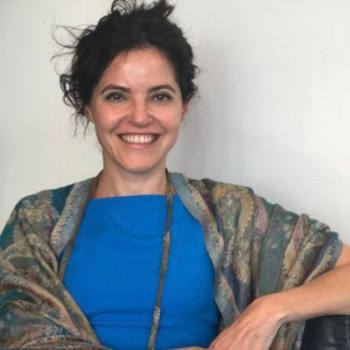Since 2014, Alarcos Cieza, who was born in Ciudad Real, is the responsible of the Vision, Audition, Disability and Rehabilitation Department of the World Health Organization (WHO). Her task is to develop action plans and health policies in developing countries in accordance with their own ministries.
In this interview, she and her colleague Juan Carlos Silva, an ophthalmologist and regional advisor of visual health in the regional office of WHO in America, they talk about their experience in the United Nations, the goals that have been set out for the following years and the way COVID-19 pandemic is affecting projects related to vision and disability.
In relation to eye health, how does WHO work to assist countries where health services are precarious?
Geneva WHO office receives guidelines from the World Health Assembly and it develops strategies. Although it provides technical cooperation to countries, regional offices answer directly to the Member States requests.
Which are the consequences of eye problems on population where there are shortcomings in health system?
Many eye diseases receive medical and surgical treatment that prevents loss of vision or it recovers it. In case of a lack of these resources, there will be people who lose their vision. This will limit their personal and professional development but it will also have a personal and social impact.
In relation to project implementation, which are the main obstacles? Which handicaps have an impact on the access of world population to eye care system?
On the one hand, in primary health care of newborns, children and adults, eye health is not prioritized although it is essential for people’s life course. On the other hand, services and human resources are located in wealthy places, leaving the most vulnerable without this service.
Throughout the years, which has been the progress on eye health programs in WHO? How is, for example, gender perspective making part of it?
Inequalities happen in different ways, including gender that highlights in some parts of the world. The programme addresses that issue in order to establish national policies that reduce these inequalities.
On the World Sight Day 2020, Eyes of the world has shown the relation between eye health and Sustainable Development Goals (SDGs). Which one do you think is the key of the Agenda 2030 achievement?
Achieving the Goals have a direct effect on people’s health. With regard to goal 3 good health and well-being, ensuring sensory functions directly impacts on people’s life course and quality. Our mission is to strengthen health systems so that countries achieve that goal.
How does COVID-19 pandemic impact on your duty and projects related to eye health?
Visits of public officers from WHO have been reduced, which limits technical cooperation. However, pandemic enables us to adapt and now we can do most of the work by virtual media and get the job done. The advantage is that we can help more countries at the same time.
Which advice would you give to organizations such as Eyes of the world in order to implement their projects more effectively?
I would strengthen national capacities, particularly human resources, throu
